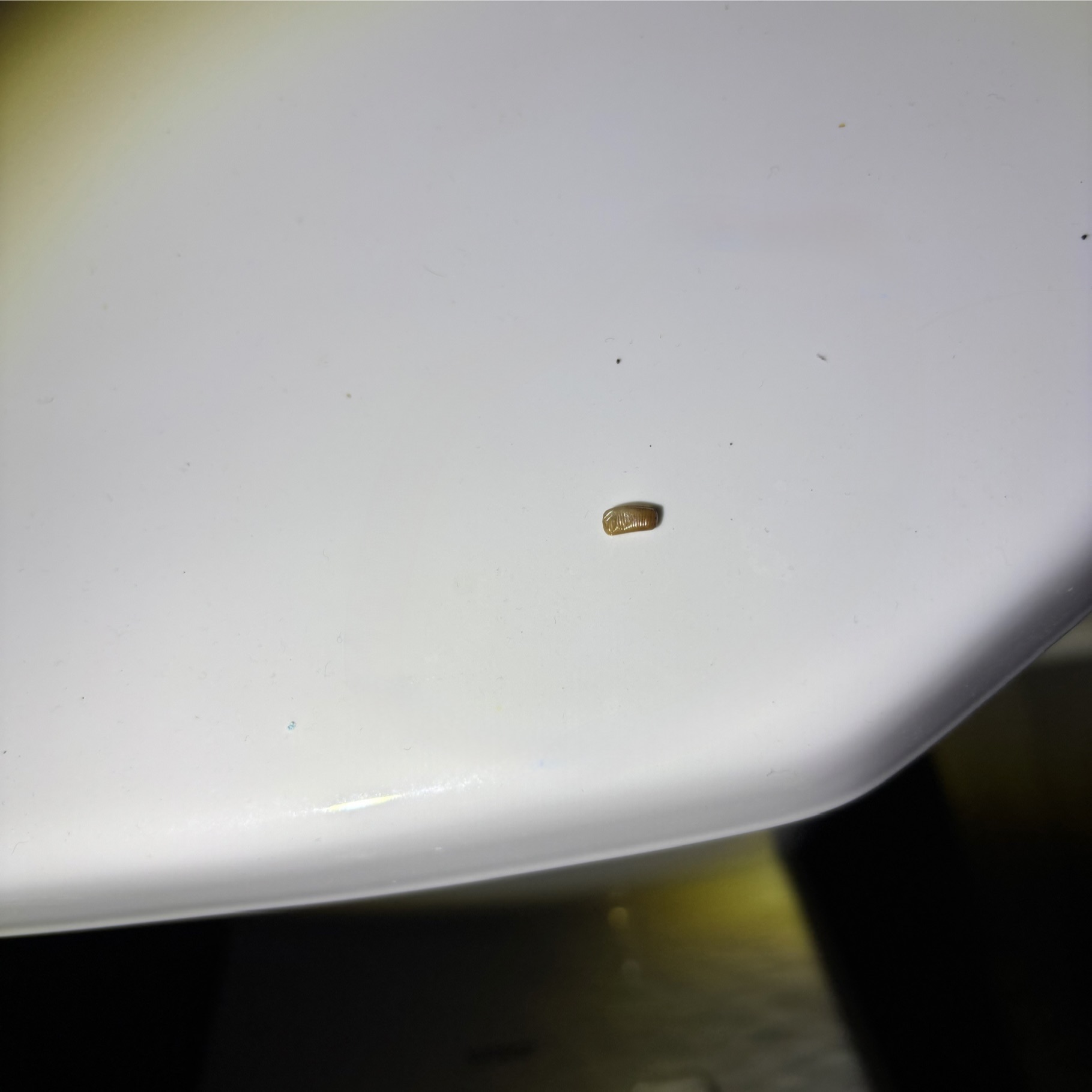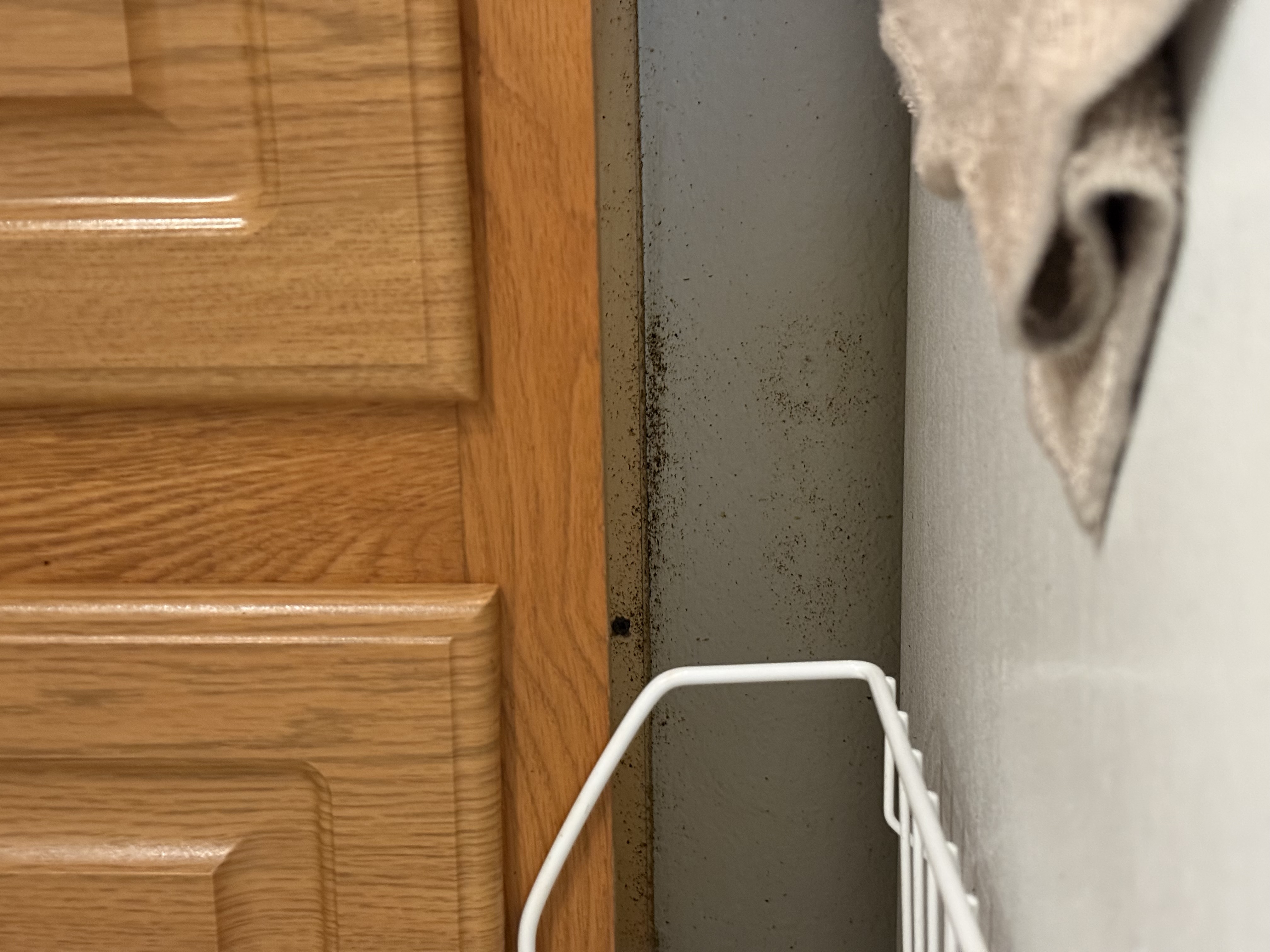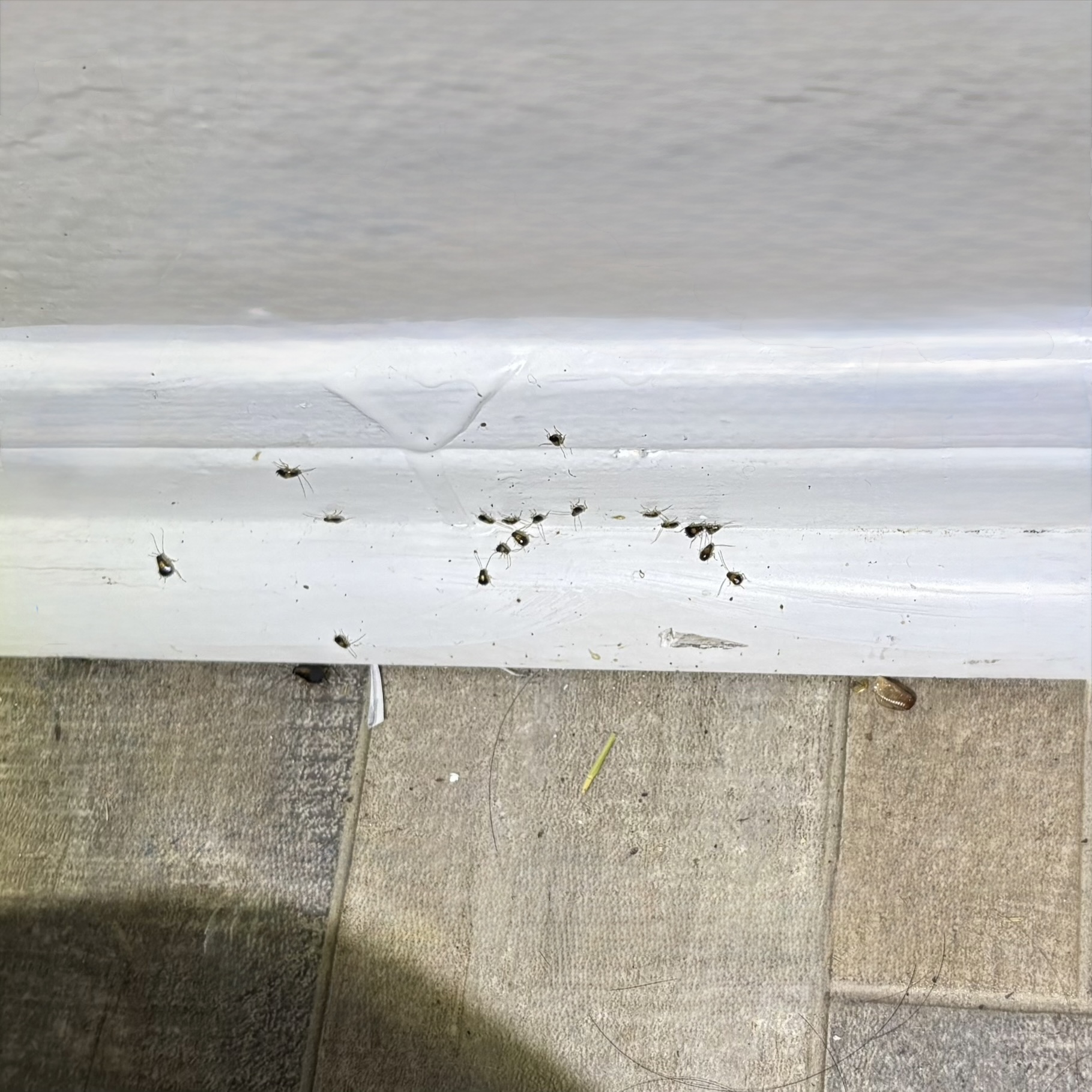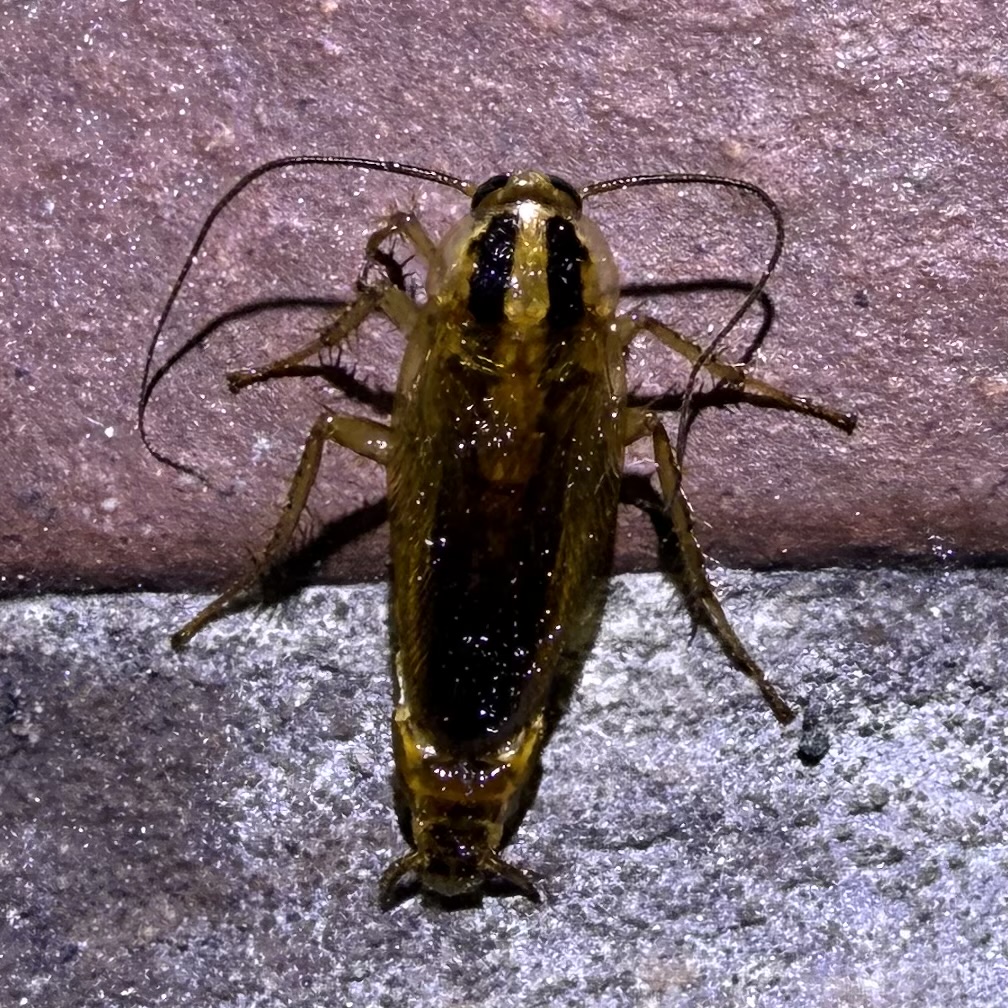German Cockroach Control
Specialized German cockroach elimination for apartment complexes in Kansas City. Professional treatment for the most common apartment pest with guaranteed results.
Signs of German Cockroach Infestation
German cockroaches are the most common apartment pest. Early detection is crucial for effective control. Here are the key warning signs to watch for.
Cockroach Droppings
Small, dark, cylindrical droppings that look like coffee grounds or black pepper. German cockroaches leave smaller droppings, while larger species leave bigger pellets.
Where to look: Kitchen cabinets, behind appliances, bathroom corners, pantry areas

Egg Cases (Oothecae)
Brown, capsule-shaped cases about 1/4 to 1/2 inch long. German cockroach egg cases are smaller and lighter colored than American cockroach cases.
Where to look: Cracks and crevices, behind furniture, in storage areas, near water sources
Strong Musty Odor
A distinct, oily, musty smell that becomes stronger with larger infestations. This odor comes from cockroach pheromones and secretions.
Most noticeable: Enclosed spaces, cabinets, storage rooms, areas with poor ventilation

Smear Marks
Dark, irregular smear marks along walls, especially where walls meet floors. These are left by cockroaches as they travel along their regular pathways.
Common areas: Baseboards, door frames, around pipes, electrical outlets

Live Cockroaches
Seeing cockroaches during daylight hours often indicates a severe infestation. They're typically nocturnal, so daytime sightings suggest overcrowding.
Peak activity: Nighttime, especially 1-3 hours after lights go out
Shed Skins
Light brown, translucent skins left behind as cockroaches molt and grow. Finding multiple shed skins indicates an active, growing population.
Common locations: Near hiding spots, in cracks, behind appliances, storage areas
Species Comparison Reference
While German cockroaches are the primary apartment pest, you may occasionally encounter other species. Use this reference to distinguish between them.
| Photo | Species | Size & Appearance | Common Locations | Key Behavior | Treatment Focus |
|---|---|---|---|---|---|

|
German Cockroach90% of apartment infestations |
• 1/2 to 5/8 inch • Light brown/tan • Two dark stripes • Wings, rarely fly |
• Kitchens • Bathrooms • Behind appliances • Warm, humid areas |
• Nocturnal • Fast reproduction • Stay near food/water • Spread between units |
Most Problematic Comprehensive building-wide treatment required |
|
Photo
|
• 1.5 to 2 inches • Reddish-brown • Yellow band • Strong fliers |
• Basements • Boiler rooms • Sewers/drains • Steam tunnels |
• Warm, moist areas • Can fly short distances • Enter through drains • Live in utilities |
Infrastructure Focus Target building systems and common areas |
|
|
Photo
|
• 1 to 1.25 inches • Dark brown/black • Shiny, greasy • Cannot fly |
• Damp basements • Floor drains • Crawl spaces • Water heaters |
• Slower moving • Constant moisture • Outdoor to indoor • Cool temperatures |
Moisture Control Address water issues and seal entry points |
Additional Resources & References
Authoritative sources and additional information about German cockroach identification, biology, and control methods.
EPA Cockroach Control Guide
Official EPA guidelines for cockroach identification and integrated pest management strategies.
Visit EPA ResourceUniversity of Nebraska Extension
Comprehensive cockroach biology, identification, and management from university research.
View ResearchCDC Health & Safety
Health risks associated with cockroach infestations and prevention guidelines.
Health GuidelinesNPMA Professional Standards
National Pest Management Association guidelines for professional cockroach control.
Industry StandardsKansas State University Extension
Local research and recommendations specific to Kansas pest management.
Local ResearchApartment Management Resources
Property management best practices for pest prevention and tenant communication.
Management TipsGerman Cockroach Control FAQ
Get answers to common questions about German cockroach infestations and professional treatment in apartment complexes.
How fast do cockroaches reproduce in apartments?
German cockroaches can produce up to 400 offspring in their lifetime. A single female can lay 4-8 egg cases, each containing 30-40 eggs. Under ideal apartment conditions (warmth, moisture, food), they can complete their lifecycle in just 36 days, leading to rapid population explosions.
Why are German cockroaches so common in apartments?
German cockroaches thrive in apartment environments because of shared walls, plumbing, and electrical systems that allow easy movement between units. They prefer warm, humid areas near food and water sources - exactly what kitchens and bathrooms provide. Their small size allows them to hide in tiny cracks and crevices.
Can cockroaches spread between apartment units?
Yes, cockroaches easily travel between units through wall voids, pipe chases, electrical conduits, and shared ventilation systems. They can also be transported in boxes, bags, or furniture. This is why building-wide treatment is often necessary rather than treating individual units.
What health risks do cockroaches pose to tenants?
Cockroaches carry bacteria, viruses, and parasites that cause food poisoning, dysentery, and gastroenteritis. Their shed skins and droppings are major allergens that trigger asthma and allergic reactions. They can contaminate food surfaces and contribute to poor indoor air quality.
How long does professional cockroach treatment take?
Initial treatment typically shows results within 7-14 days, but complete elimination requires 4-8 weeks depending on infestation severity. Our rotation-based approach ensures consistent pressure on the population while accommodating tenant schedules and minimizing disruption.
What makes apartment cockroach control different from residential?
Apartment treatment requires coordination across multiple units, shared system treatment, and specialized access protocols. We work with property management to minimize tenant disruption while ensuring comprehensive coverage of common areas, utility rooms, and individual units.
Do you treat vacant units differently?
Yes, vacant units receive more intensive treatment since we have unrestricted access. We can use stronger formulations, treat wall voids, and place monitoring stations in optimal locations. Vacant units often serve as harboring areas that require special attention.
What should tenants do during cockroach treatment?
Tenants should remove food items from treatment areas, provide access to kitchens and bathrooms, and avoid cleaning treated surfaces for 48 hours. We provide specific preparation instructions and work around tenant schedules whenever possible.
How do you prevent re-infestation?
Prevention involves sealing entry points, eliminating moisture sources, regular monitoring, and ongoing maintenance treatments. We work with property management to address structural issues and implement integrated pest management practices that reduce attractant conditions.
Are your treatments safe for pets and children?
Yes, we use EPA-approved products and follow strict safety protocols. Our treatments are designed to target cockroaches while being safe for humans and pets when applied correctly. We provide detailed safety information and re-entry instructions for each treatment.
Related Pest Control Services
Comprehensive apartment pest management solutions
Bed Bug Treatment
Professional heat treatment and chemical solutions for bed bug elimination
Learn More